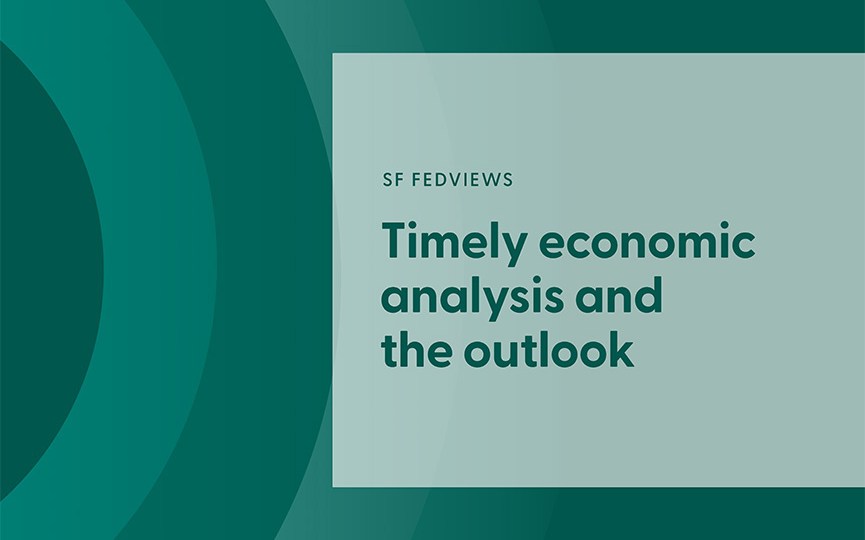We produce a wide range of publications that share the latest data, analysis, and insights from various teams at the SF Fed. Our publications help inform and strengthen public understanding of economic issues and its impact on people and communities.

Economic Research Publications
FRBSF Economic Letter >
Economic analysis for general audiences
-

The Economic Effects of Tariffs
The United States announced new, higher tariff rates this year. Tariffs can affect supply chains, investment, and firms’ input costs, resulting in supply-side effects such as higher inflation and higher unemployment. However, tariffs can also affect spending, the demand side of the economy. Weaker demand translates to higher unemployment but lower inflation. Estimates using 40 years of international data show that, following a change in tariffs, initially the unemployment rate increases and inflation declines. Over time, however, the unemployment rate returns to normal levels while inflation increases.
SF FedViews >
Analysis of current economic developments and the outlook
-

SF FedViews: Solid Growth, but Small Cracks Have Emerged
Robert G. Valletta, associate director of research and senior vice president at the Federal Reserve Bank of San Francisco, shared views on the current economy and the outlook from the Economic Research Department as of November 20, 2025.
Working Papers >
The latest in economic research
-

Not All Inflation Is the Same: State-Dependent Transmission of Monetary Policy
We show that the underlying source of inflation impacts financial market perceptions of the persistence of monetary policy tightening. Investors expect policy tightening to be more persistent inflation is driven by demand factors. During supply-driven episodes, however, investors perceive tightening as less persistent and less effective at producing a disinflation. These results point to a […]
Community Engagement and Analysis Publications
Community Development Research Briefs >
Research briefs feature data and commentary on community development trends and issues.
-
On-the-Job Exposure to AI Among Lower-Income Workers
To better understand the potential impacts of AI on the economy, this analysis assesses workers likely to be exposed to AI on the job, paying particular attention to workers in lower-income households, what occupations and industries they work in, and how exposure varies across different parts of the country.
Community Development Working Papers >
Working papers provide in-depth analysis of emerging community development issues from practitioners and scholars.
-
Housing Market Interventions and Residential Mobility in the San Francisco Bay Area
Limited evaluation research exists on which housing solutions are most effective in stabilizing communities so that those who wish to stay are able to do so in the midst of an influx of newcomers. This study seeks to fill this gap by assessing patterns of individual and household mobility related to specific housing interventions in the nine-county San Francisco Bay Area. Specifically, this study examines impacts of market-rate and subsidized development, and tenant protections, including rent stabilization and just cause for evictions protections.


